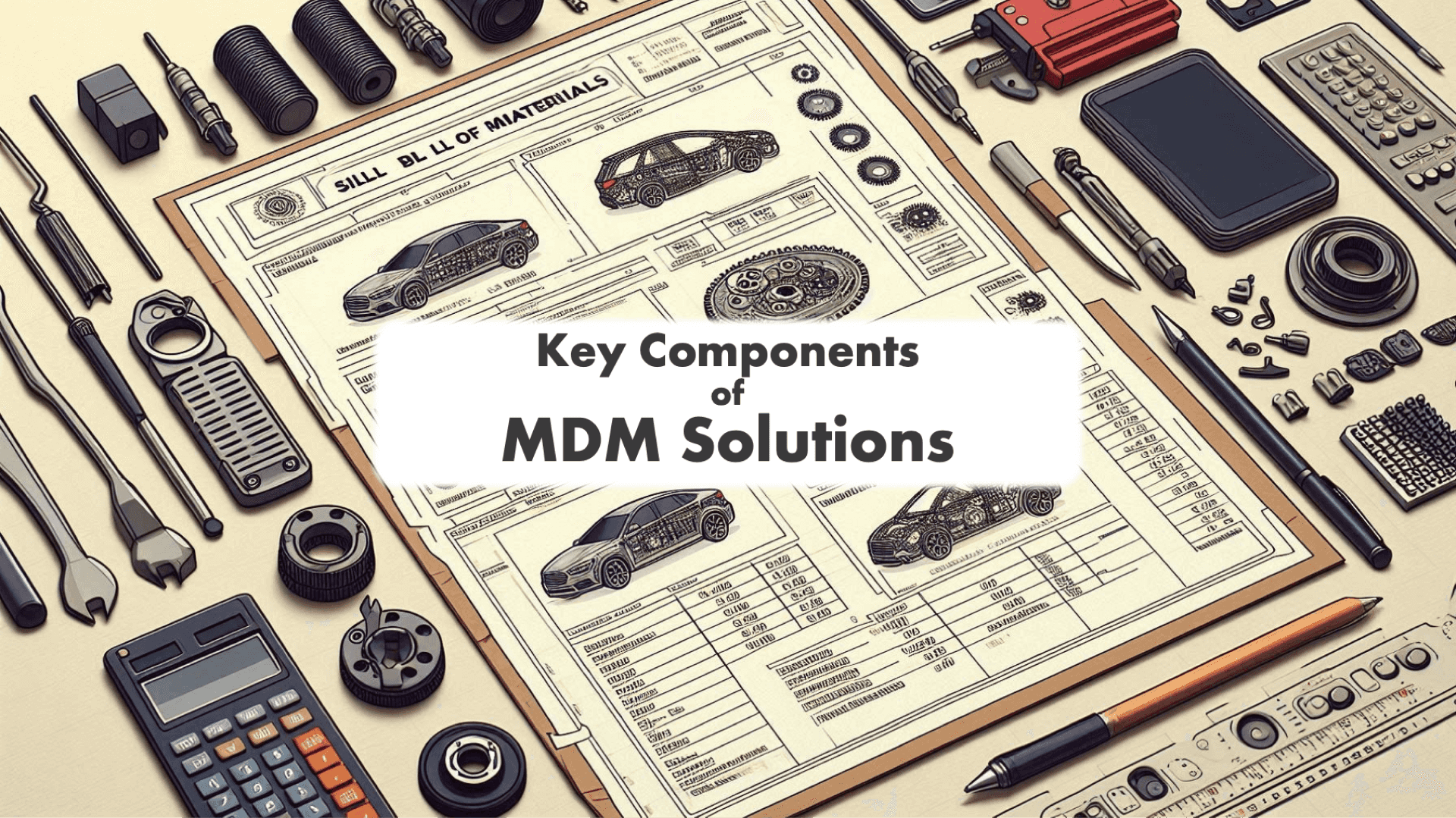Jun 7th, 2024
The Ultimate Guide to Choosing Between Excel and PIM for Product Data Management
Categories:Product Information Management SystemProduct Data Management SystemManaging product data effectively is crucial for manufacturing companies.
Accurate and high-quality product data not only improves customer experience but also drives conversion rates and boosts overall business performance. However, relying on traditional tools like Excel can lead to significant challenges. In this guide, we’ll explore the limitations of Excel and highlight the advantages of Product Information Management (PIM) systems for manufacturers.
Understanding the Basics: Excel vs. PIM
Product Information Management (PIM) systems are specialized tools designed to manage, enrich, and distribute product data across various channels. Unlike Excel, which is primarily a spreadsheet tool, PIM systems offer advanced features that streamline product data management processes, ensuring data accuracy and consistency. Cloud-based PIM solutions provide the added benefit of accessibility from anywhere, making them ideal for modern businesses.
Excel, part of the Microsoft Office suite, is widely used for various data management tasks. However, its limitations become apparent as product catalogs grow and data complexity increases. PIM systems, on the other hand, are built specifically to handle the demands of product data management, offering scalability, integration, and robust data governance features. They centralize product information, ensuring consistency and accuracy across all departments and channels.
Key Challenges with Using Excel for Product Data Management
Using Excel for managing product data introduces several challenges that can hinder business efficiency and data accuracy. One major issue is the reliance on manual processes. Manual data entry in Excel is not only time-consuming but also prone to errors. As the product catalog expands, maintaining accurate and consistent data becomes increasingly difficult. This often leads to inefficiencies and potential customer dissatisfaction.
Another significant challenge is data duplication and inconsistencies. Managing product data in Excel often results in fragmented files and data duplication. Identifying and merging duplicates can be a daunting task, impacting data accuracy and overall productivity. Without a centralized system, standardizing product data across the organization becomes a challenging endeavor. Different departments may use varied naming conventions and data formats, leading to inconsistencies and miscommunications.
Additionally, Excel struggles with integrating data from multiple sources like ERP systems, supplier databases, and marketing platforms. This limitation hampers the ability to maintain a unified view of product information. As businesses grow, the volume of product data increases, and Excel’s scalability limitations make it unsuitable for managing large datasets efficiently, leading to performance bottlenecks.
The Advantages of PIM Systems for Manufacturers
PIM systems offer numerous advantages over Excel, making them an essential tool for modern manufacturers. One of the primary benefits is centralized data management. PIM systems provide a single source of truth for all product information, ensuring consistency and accuracy across all departments and channels. This centralized approach improves overall data quality and simplifies data governance.
PIM systems also excel in data enrichment. They offer advanced capabilities that allow manufacturers to add detailed product attributes, high-quality images, videos, and compelling product descriptions. This enrichment enhances the customer experience and boosts SEO rankings, making products more discoverable online. The inclusion of digital assets such as high-resolution images and instructional videos can significantly improve the quality of product information available to customers.
Another significant advantage is seamless multi-channel distribution. PIM systems enable manufacturers to tailor product data for various channels, including eCommerce platforms, distributor portals, and print catalogs. This ensures that each channel receives optimized and up-to-date product information, improving sales performance and customer satisfaction. With cloud-based PIM solutions, this distribution can be managed efficiently from anywhere.
PIM systems facilitate better collaboration among teams by providing real-time access to product data. Robust workflow management features enable efficient approval processes and data governance, ensuring data integrity. This collaborative environment streamlines operations and enhances productivity.
PIM systems facilitate better collaboration among teams by providing real-time access to product data. Robust workflow management features enable efficient approval processes and data governance, ensuring data integrity. This collaborative environment streamlines operations and enhances productivity.
Unlike Excel, PIM systems are designed to handle large datasets and can scale with the business. Manufacturers can easily add new products, attributes, and categories without performance degradation. This scalability is crucial for growing businesses that need to manage an expanding product catalog efficiently.
Comparing PIM and ERP Systems
While both PIM and ERP systems manage product data, they serve different purposes. ERP systems handle transactional data and business processes, whereas PIM systems focus on the detailed product information required for marketing and sales. Together, they provide a comprehensive solution for manufacturers, with ERPs managing the supply chain and production details, and PIMs enhancing the marketing and sales data.
ERP systems are essential for managing the core operations of a business, including inventory management, order processing, and financials. However, they often lack the flexibility and advanced features needed for detailed product data management. PIM systems complement ERPs by focusing on enriching product data, ensuring it is accurate, complete, and ready for distribution across multiple channels. For enterprise PIM use cases, integrating with an ERP system can enhance overall efficiency by ensuring seamless data flow between production and marketing departments.
Implementing PIM Best Practices
To maximize the benefits of PIM systems, manufacturers should follow best practices during implementation. First, it is essential to define clear objectives and goals for the PIM system. This ensures that the PIM solution aligns with the business's specific needs and requirements.
Engaging key stakeholders from various departments is crucial for successful implementation. Involving stakeholders ensures that the PIM system meets the needs of all users and integrates seamlessly with existing processes. This collaborative approach helps to address potential issues early and fosters a sense of ownership among users.
Prioritizing data quality is another critical best practice. Establishing data governance processes and regularly validating product data ensures that the information in the PIM system is accurate and reliable. High-quality data enhances customer trust and improves overall business performance. Utilizing cloud-based PIM solutions can further streamline these processes by providing automated data import and validation features.
Leveraging integration capabilities is also important. Integrating the PIM system with existing ERP, CRM, and eCommerce platforms ensures a seamless flow of data across the organization. This integration reduces manual data entry, minimizes errors, and enhances operational efficiency.
Finally, continuous improvement is key to maintaining an effective PIM system. Regularly reviewing and updating the PIM system to adapt to changing business needs and technological advancements ensures that the system remains relevant and provides ongoing benefits to the organization.
Conclusion: Maximizing Business Potential with PIM
A robust PIM system is essential for manufacturers looking to streamline product data management, improve data quality, and enhance overall operational efficiency. By leveraging the features and benefits of PIM, manufacturers can achieve a competitive edge and drive success in a dynamic market. The best product information management system integrates seamlessly with existing processes, supports marketing and sales efforts, and ensures consistent product information across all channels. Implementing a PIM solution enables manufacturers to manage their product data efficiently, reducing time-to-market, improving customer satisfaction, and driving sales growth. Whether considering a B2B PIM for enhancing business-to-business interactions or an enterprise PIM for large-scale operations, the advantages are clear and impactful.
About Neurologik.io
Do you feel like your product team at your company spends way too much time on tedious data administration instead of actual product work?
Neurologik.io streamlines all your product data into one intuitive platform, putting an end to hunting through scattered systems and manually updating information. Our customers cut their data management workload by 80% on average. Imagine what your team could accomplish with all that time saved.
If you'd like to explore how Neurologik.io can massively boost your company's product team productivity, Contact us for a ProductHub demo today.







